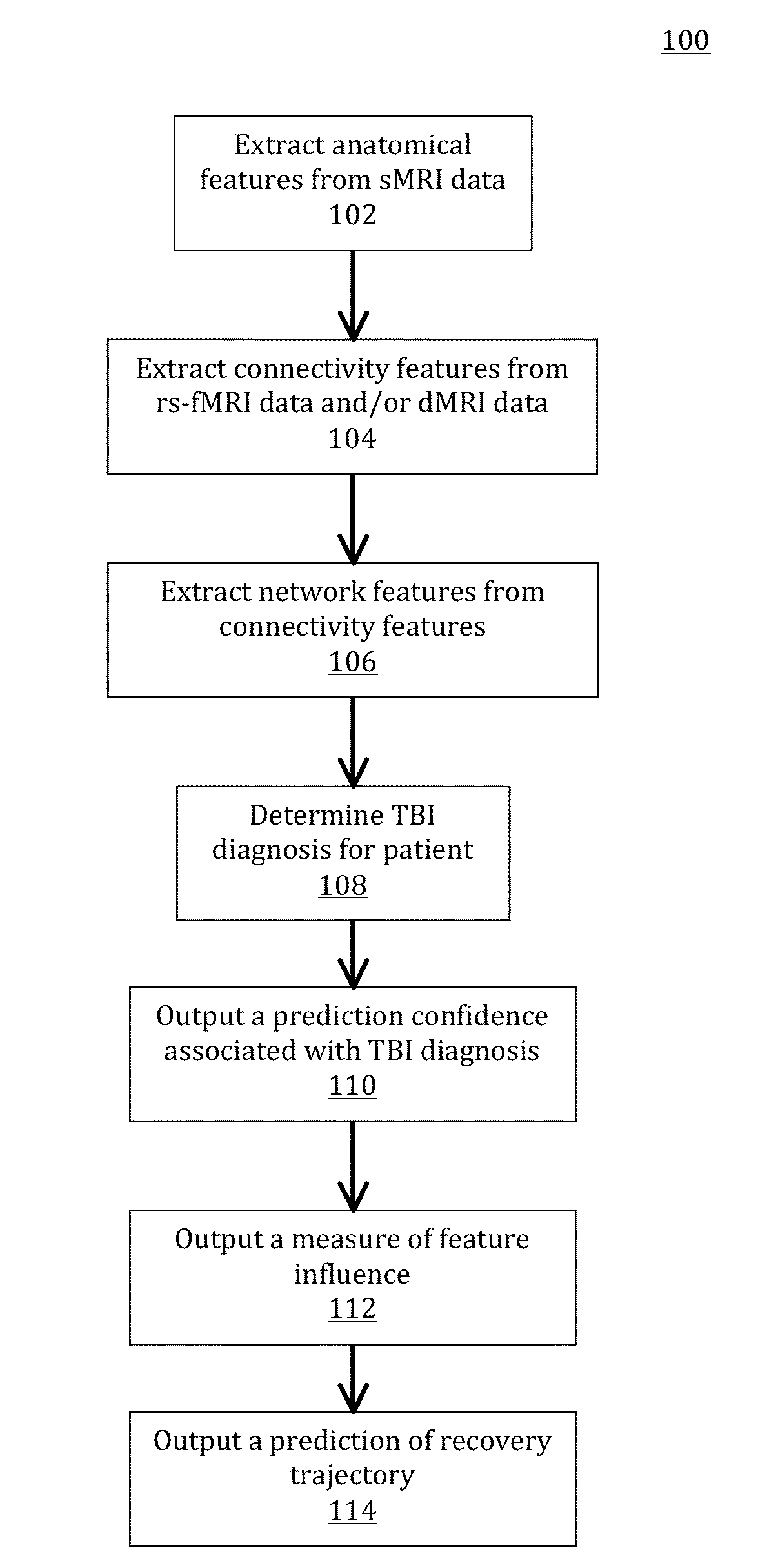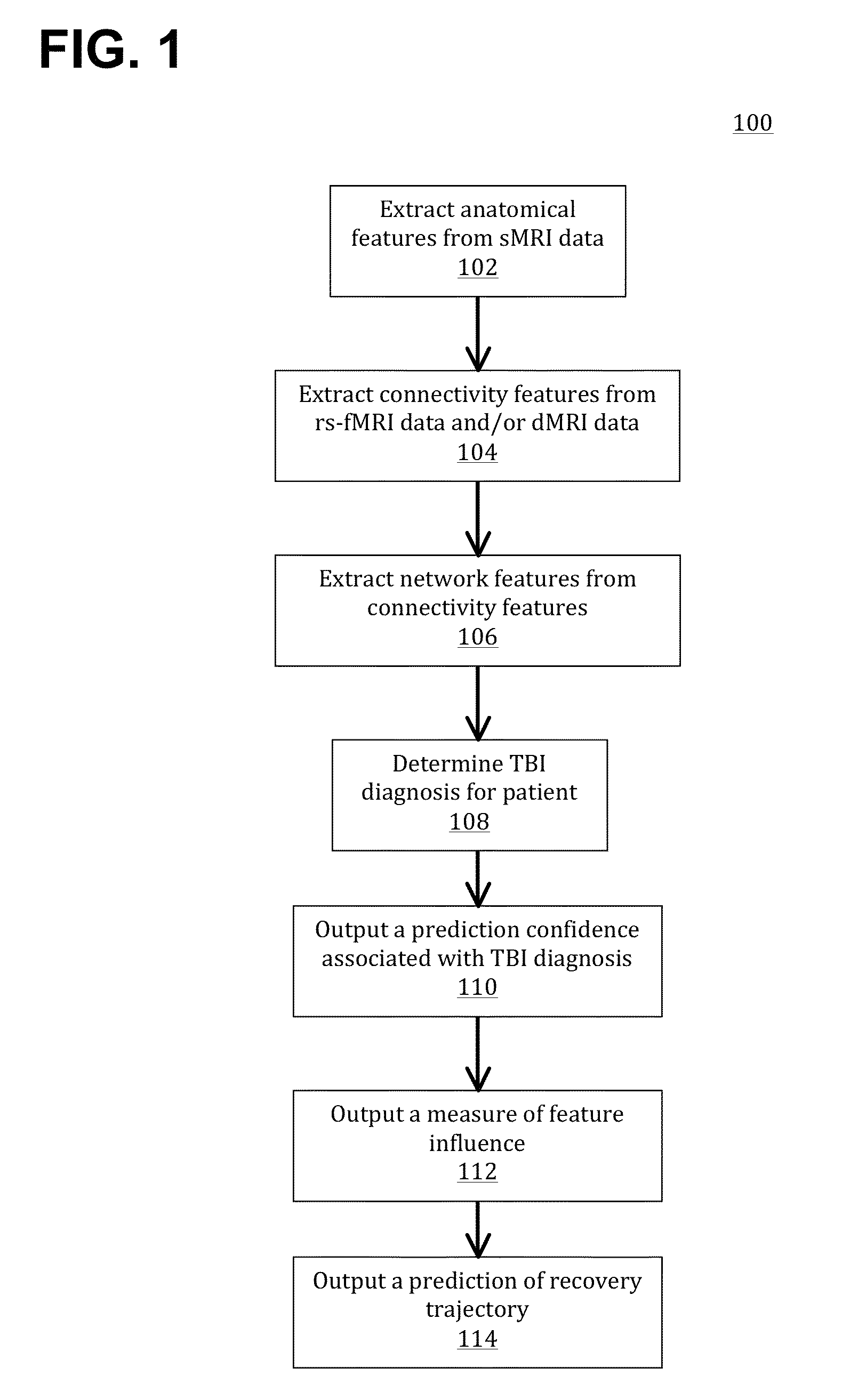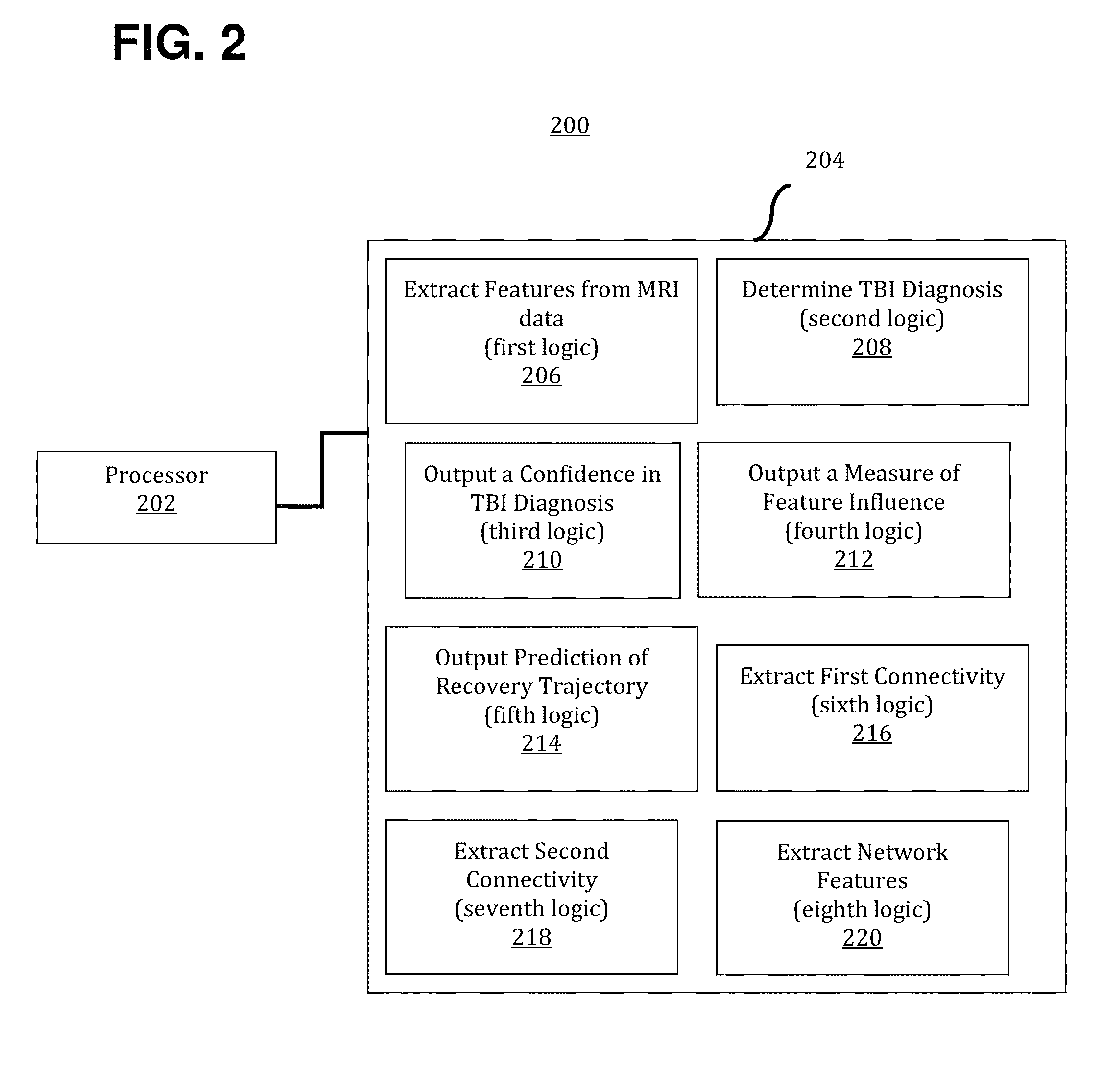Assessment of Traumatic Brain Injury
- Summary
- Abstract
- Description
- Claims
- Application Information
AI Technical Summary
Benefits of technology
Problems solved by technology
Method used
Image
Examples
Embodiment Construction
[0020]An approach for assessing a traumatic brain injury (TBI) in a patient has been discovered and is described herein. The approach may be used to provide one or more of (a) a diagnostic of whether a new subject has TBI based on imaging data obtained from the subject, (b) an indication of confidence in the prediction, and / or (c) an explanation of what damage contributed to the prediction. In addition, the approach may be used to provide a personalized recovery trajectory based on brain imaging data and other patient-specific factors (e.g., genetic information, phenotypic information, test results, etc.). As further described herein, methods in accordance with the present teachings may use imaging data from an existing dataset to train a diagnostic classification model that distinguishes patients from controls and that explains the decision whereby the patients are distinguished from the controls. A regression model may be trained to make an individualized prediction of recovery th...
PUM
 Login to View More
Login to View More Abstract
Description
Claims
Application Information
 Login to View More
Login to View More - R&D
- Intellectual Property
- Life Sciences
- Materials
- Tech Scout
- Unparalleled Data Quality
- Higher Quality Content
- 60% Fewer Hallucinations
Browse by: Latest US Patents, China's latest patents, Technical Efficacy Thesaurus, Application Domain, Technology Topic, Popular Technical Reports.
© 2025 PatSnap. All rights reserved.Legal|Privacy policy|Modern Slavery Act Transparency Statement|Sitemap|About US| Contact US: help@patsnap.com



